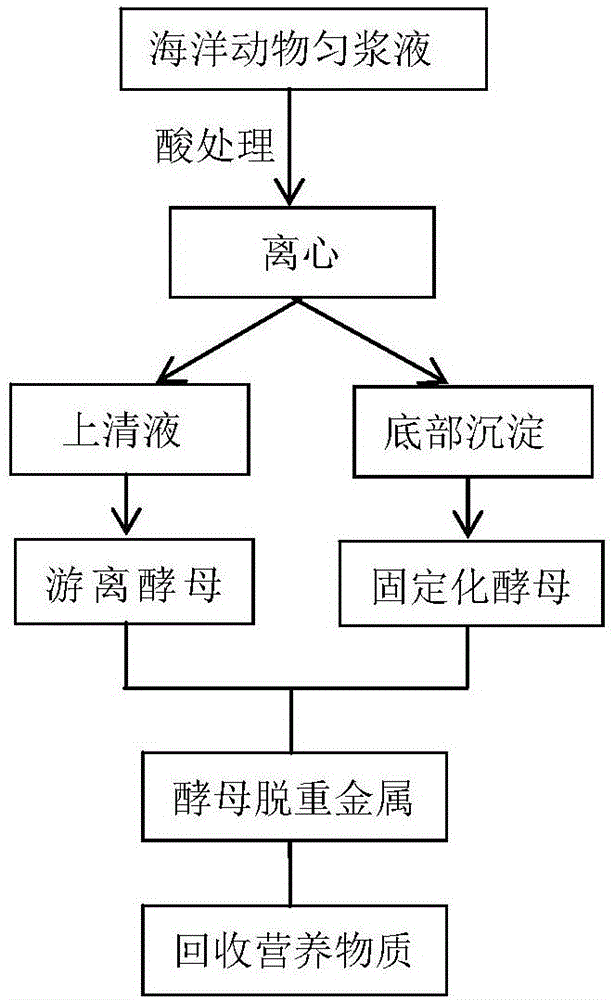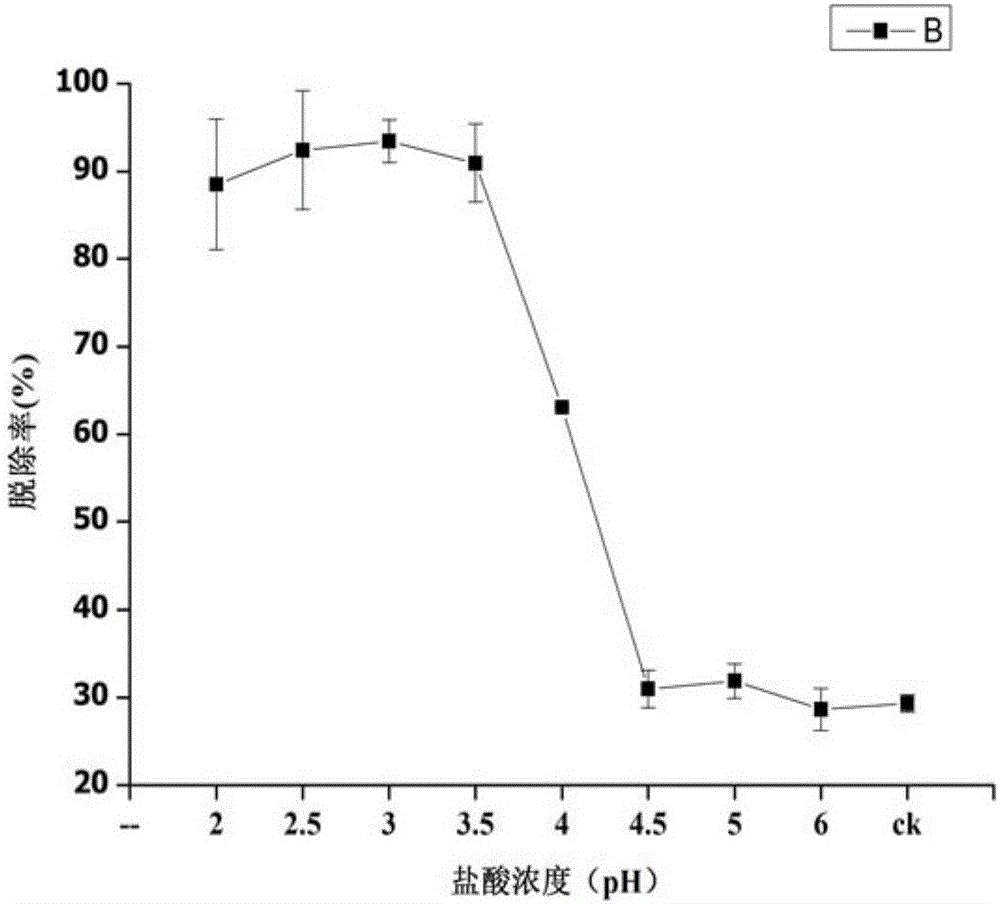Method for removing heavy metal in marine animal homogenate
A technology for removing heavy metals from marine animals, applied in microorganism-based methods, methods using microorganisms, biochemical equipment and methods, etc., can solve the problems of difficulty in separating the remover and the removal material, and achieve easy filtration and removal. and reuse, high removal rate, and the effect of ensuring safety
- Summary
- Abstract
- Description
- Claims
- Application Information
AI Technical Summary
Problems solved by technology
Method used
Image
Examples
Embodiment 1
[0039] The method for removing heavy metals in oyster homogenate, the specific steps are as follows:
[0040] 1) Cultivation of Pichia Kudori and Preparation of Yeast Sludge
[0041] Slant activation: inoculate the strains stored at 4°C into YPD slant medium, and culture in a constant temperature incubator at 28°C for 24 hours;
[0042] Activation of liquid medium: Scrape the activated bacteria from the inclined surface with the inoculation loop and inoculate a small amount into the YPD liquid medium, and cultivate it in a constant temperature shaking incubator at 28°C and 180r / min for 24h to form a seed liquid;
[0043] Sodium chloride stress culture: Take 1ml of the activated yeast seed solution, inoculate it into YPD liquid medium containing 8% sodium chloride, and cultivate it at 28°C and 180r / min for 20h.
[0044] Collect the sludge: After 20 hours of sodium chloride stress culture, use a hemocytometer to quantify. Take a certain volume of yeast suspension and centrifug...
Embodiment 2
[0055] The method for removing heavy metals in sea cucumber intestinal homogenate, concrete steps are as follows (as figure 1 shown):
[0056] 1) Cultivation of Pichia Kudori and Preparation of Yeast Sludge
[0057] Slant activation: inoculate the strains stored at 4°C into YPD slant medium, and culture in a constant temperature incubator at 28°C for 24 hours;
[0058] Activation of liquid medium: Scrape the activated bacteria from the inclined surface with the inoculation loop and inoculate a small amount into the YPD liquid medium, and cultivate it in a constant temperature shaking incubator at 28°C and 180r / min for 24h to form a seed liquid;
[0059] Sodium chloride stress culture: Take 1ml of the activated yeast seed solution, inoculate it into YPD liquid medium containing 8% sodium chloride, and cultivate it at 28°C and 180r / min for 20h.
[0060] Collect the sludge: After 20 hours of sodium chloride stress culture, use a hemocytometer to quantify. Take a certain volume...
Embodiment 3
[0075] The method for removing heavy metals in sea cucumber egg homogenate, the specific steps are as follows:
[0076] 1) Cultivation of Pichia Kudori and Preparation of Yeast Sludge
[0077] Slant activation: inoculate the strains stored at 4°C into YPD slant medium, and culture in a constant temperature incubator at 28°C for 24 hours;
[0078] Activation of liquid medium: Scrape the activated bacteria from the inclined surface with the inoculation loop and inoculate a small amount into the YPD liquid medium, and cultivate it in a constant temperature shaking incubator at 28°C and 180r / min for 24h to form a seed liquid;
[0079] Sodium chloride stress culture: Take 1ml of the activated yeast seed solution, inoculate it into YPD liquid medium containing 8% sodium chloride, and cultivate it at 28°C and 180r / min for 20h.
[0080] Collect the sludge: After 20 hours of sodium chloride stress culture, use a hemocytometer to quantify. Take a certain volume of yeast suspension and...
PUM
| Property | Measurement | Unit |
|---|---|---|
| diameter | aaaaa | aaaaa |
Abstract
Description
Claims
Application Information
 Login to View More
Login to View More - R&D
- Intellectual Property
- Life Sciences
- Materials
- Tech Scout
- Unparalleled Data Quality
- Higher Quality Content
- 60% Fewer Hallucinations
Browse by: Latest US Patents, China's latest patents, Technical Efficacy Thesaurus, Application Domain, Technology Topic, Popular Technical Reports.
© 2025 PatSnap. All rights reserved.Legal|Privacy policy|Modern Slavery Act Transparency Statement|Sitemap|About US| Contact US: help@patsnap.com



